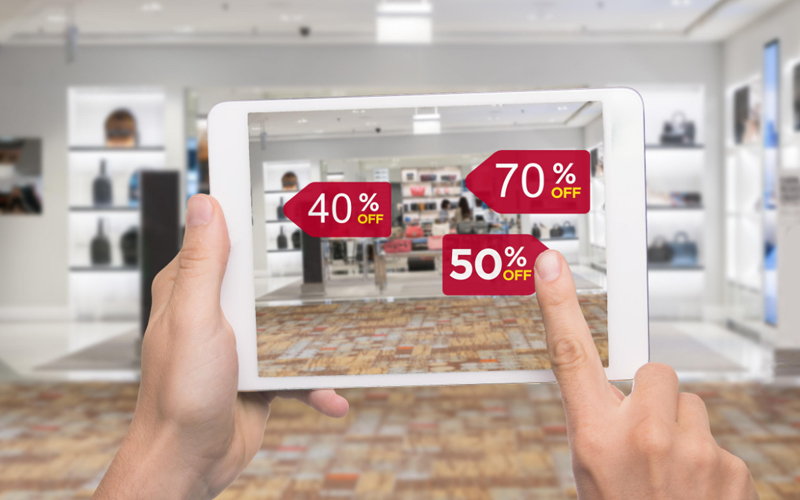Modern retail is no longer a channel-specific journey. Consumers expect every brand interaction to be seamless, personalised, and consistent, regardless of where or how they shop. Omnichannel retail blends physical and digital touchpoints to deliver a unified shopping experience that keeps pace with these evolving expectations.
As digital maturity rises and demand for convenience increases, the omnichannel retail market is set to grow from $10.13 billion in 2025 to $25.35 billion by 2032, with a CAGR of 14%. As the retail landscape transforms, businesses must stay informed about evolving omnichannel retail trends that influence buyer behaviour, operations and technology investment. Brands that stay agile, integrate channels effectively, and anticipate these shifts will shape the future of commerce in 2025 and beyond.
top ten omnichannel retail trends
A wave of innovation is reshaping how customers interact with brands. The following omnichannel trends highlight how modern retailers are using omnichannel customer experience strategies to stay relevant and competitive.
unified experiences across physical and digital touchpoints
Brands are breaking silos and creating seamless transitions between channels. Click-and-collect or Buy Online, Pick Up In Store (BOPIS) services, endless aisle technology, and real-time inventory updates are helping deliver frictionless journeys that blend digital convenience with in-store immediacy.
mobile-first commerce for on-the-go engagement
Smartphones are now the go-to platform for product discovery, comparison, and purchase. Omnichannel customer experience depends on meeting customers wherever they are, especially on mobile. Retailers prioritising mobile-optimised experiences – including apps, mobile wallets, and location-based offers – are seeing improved engagement.
social commerce to turn inspiration into action
Platforms like Instagram, TikTok, and Pinterest have become shopping hubs. Social commerce shortens the buyer journey and makes discovery both engaging and actionable. Brands now leverage influencer partnerships and shoppable posts to convert likes into purchases.
AI-powered personalisation at scale
Artificial intelligence is reshaping how brands understand and serve their customers. From product recommendations to dynamic pricing and tailored content, AI enables one-on-one experiences at scale. First-party data, paired with machine learning, is supporting more meaningful, localised interactions across channels.
fast, flexible, and transparent fulfilment
Speed and clarity in delivery can make or break the omnichannel customer experience. Businesses are investing in flexible fulfilment options, including ship-from-store, curbside pickup, and hassle-free returns. These capabilities have created operational agility and enriched customer satisfaction.
sustainability as a key purchase driver
Consumers are now more environmentally conscious than ever. Retailers focusing on ethical sourcing, reduced packaging, and carbon-neutral delivery options are seeing greater loyalty. Sustainability is no longer a niche value but a core part of the brand promise.
immersive technologies to enhance shopping journeys
Augmented Reality (AR), Virtual Reality (VR), IoT, and blockchain are helping brands build immersive and trustworthy experiences. Virtual try-ons, smart fitting rooms, and real-time traceability tools are some of the key omnichannel retail trends that add both convenience and transparency to shopping.
real-time data to fuel agile decisions
Data-driven agility helps brands stay one step ahead. Retailers are using real-time insights to respond quickly to market shifts. Collaboration between IT and marketing is enabling smarter promotions, better inventory planning, and improved campaign performance.
direct mail for more direct engagement
Even as digital channels expand, traditional touchpoints are regaining relevance as customers face digital burnout. As a result, 82% of marketers increased their direct mail spend in 2024. Paired with digital campaigns, direct mail is adding a personal, memorable element to omnichannel engagement.
customer support as a strategic differentiator
Great service has become a part of the omnichannel customer experience, with proactive omnichannel support helping drive retention. Integrated support across live chat, phone, social media, and self-service portals is helping brands empower customers and build trust.
omnichannel customer experience in retail: challenges and opportunities
Retailers face a unique set of challenges as they try to adapt to omnichannel retail trends and unify customer experiences across channels.
- Many legacy systems limit real-time data sharing and seamless integration
- Balancing digital and in-person touchpoints can create a disjointed "phygital" journey
- Building trust and loyalty requires transparency and consistent service across channels
However, each challenge is also an opportunity to create a seamless omnichannel customer experience. Technology enables personalised, consistent experiences across every interaction. By focusing on integration and agility, brands can meet evolving customer demands and exceed expectations.
Infosys BPM empowers global retailers to leverage these opportunities while navigating evolving omnichannel retail trends. Our next-gen BPM services for retail help enhance fulfilment, personalisation, and customer experience through agile, data-driven processes and seamless omnichannel integration.
conclusion
Retail is entering an experience-first era. Brands that embrace emerging omnichannel retail trends, invest in innovation, and prioritise the omnichannel customer experience will lead the future of commerce. Those who deliver not just products but seamless, consistent, and human-centred journeys across every touchpoint will be able to stand out and ensure future-ready operations.








